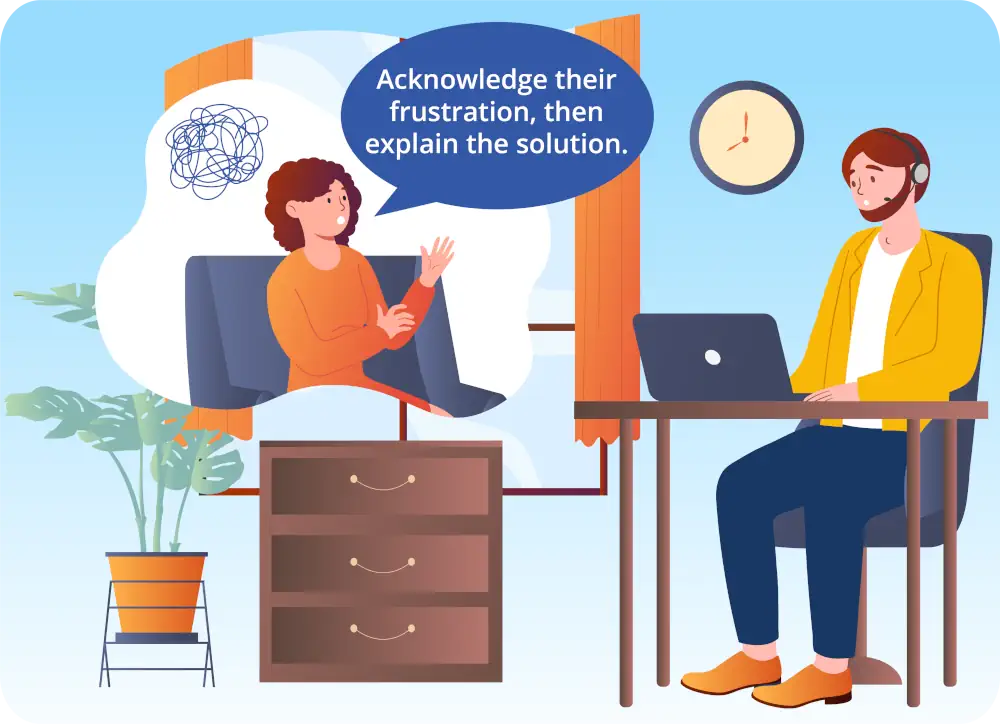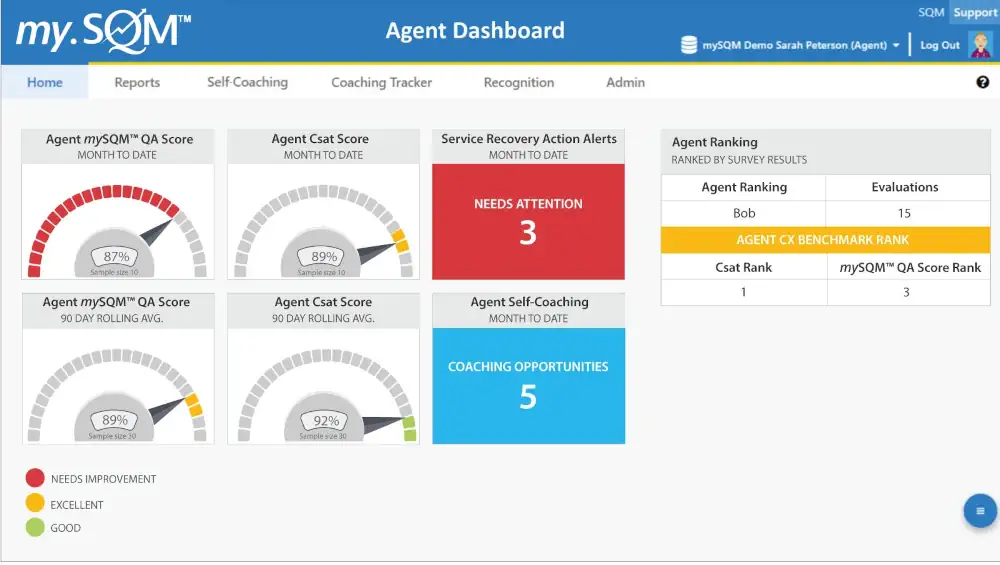Burnout has become one of the most pressing challenges in the call center industry. Agents are expected to balance high call volumes, demanding customers, and rigid performance targets—all while maintaining professionalism and empathy. Over time, this relentless pace takes a toll, leading to emotional exhaustion, declining morale, and costly turnover.
An agent’s well-being isn’t just an HR issue; it’s essential to business success. A burned-out workforce directly impacts First Call Resolution (FCR), customer satisfaction (CSAT), and overall company performance. Organizations that fail to address burnout risk a revolving door of employees, rising costs, and an eroding customer experience.
This blog explores the realities of burnout, its impact on agents and organizations, and actionable strategies leaders can use to shift from burnout to balance. By reframing culture, investing in training, and providing recognition and support, call centers can build environments where agents thrive, and morale remains high.
What Is Call Center Burnout and How Does It Impact Agents?
Call center burnout is a chronic state of physical, mental, and emotional exhaustion caused by ongoing workplace stress. The World Health Organization (WHO) defines burnout by three core symptoms: exhaustion, cynicism, and reduced professional efficacy.
For call center agents, burnout often stems from high call volumes, rigid scripts, limited autonomy, and the emotional strain of dealing with frustrated customers.
For agents, burnout often shows up in ways that are easy to recognize:
- Reduced productivity — An agent who once handled 40 calls a day may suddenly struggle to manage 25, needing more time to recover between interactions.
- Higher absenteeism — Employees may start calling in sick more frequently or taking unplanned days off just to avoid stressful shifts.
- Poor health outcomes — Prolonged stress can lead to headaches, high blood pressure, and sleep problems, as well as anxiety or depression.
- A diminished sense of purpose — Burned-out agents often feel like they’re just “going through the motions,” losing motivation to provide empathetic, customer-focused service.
When agent burnout isn’t addressed, it sets off a ripple effect—agents disengage, customers notice the drop in service quality, and companies bear the financial and cultural consequences.
Why Is Burnout a Growing Problem in Call Centers?
Burnout is not a new issue in the industry, but several trends have heightened the problem in recent years:

High turnover rates — Agent attrition averages 30–45% annually, with some sectors exceeding 60%.

Research-backed concerns — SQM Group research found that 88% of professionals identify burnout as one of the industry’s biggest challenges.

AI-Driven pressures — Agents often face added stress when AI shifts routine tasks away, leaving them with only complex calls and constant performance monitoring.

Generational shifts — While often linked to millennials, burnout now cuts across all age groups.
With more than half of agents reporting significant burnout in recent surveys, leaders can no longer afford to view it as an individual problem—it’s an organizational one.
How Can Leaders Build a Burnout-Resistant Call Center Culture?
Burnout prevention starts with leadership. Call center agents don’t just need better tools or schedules—they need managers who actively create an environment where morale can thrive. The most effective leaders understand that culture change requires deliberate effort, consistent communication, and ongoing support.
Here are six important ways leaders can create a burnout-resistant work environment:
1. Recognize Burnout Early
Burnout is often subtle at first. It may look like an agent who once thrived suddenly struggling with motivation, or a normally upbeat employee becoming more withdrawn. Leaders must be proactive in spotting these shifts. Regular check-ins, both formal and casual, can uncover early warning signs that a survey or KPI report might miss.
Supervisors should be trained to identify the most common symptoms: fatigue, declining performance, negativity, or frequent absences. But just recognizing the signs isn’t enough, leaders must also create a safe space where agents feel comfortable admitting they are overwhelmed. If agents fear judgment or negative consequences, they will often hide their struggles until the problem escalates.
Early recognition allows for timely intervention. Whether it offers temporary workload adjustments, additional coaching, or simply giving the agent time to rest and reset, small actions taken quickly can prevent long-term disengagement. By treating burnout as a shared challenge rather than an individual weakness, leaders set the tone for a supportive work environment.

2. Support Agent Well-Being
Agent well-being is the foundation of a healthy call center. Too often, organizations focus exclusively on performance metrics while overlooking the human side of the job. Leaders can make a significant difference by normalizing wellness practices that help agents recharge. This includes encouraging short micro-breaks between calls, offering flexible scheduling, and reminding employees that it’s okay to step away after a particularly tough interaction.
Work-life balance is especially critical in today’s hybrid and remote work environments. Many agents struggle to separate their professional and personal lives, leading to longer workdays and higher stress. Leaders who emphasize boundaries—such as limiting after-hours communication or scheduling predictable shifts—empower their teams to recover outside of work. This balance keeps agent’s fresher and more engaged when they are on the clock.
Physical and mental health resources also play a role. Providing access to wellness programs, counseling, or fitness benefits sends a clear signal: the company values its people, not just their productivity. When leaders show a commitment to well-being, they don’t just reduce burnout, they build loyalty and trust among their agents.

3. Provide Real-Time Support
Few things are more stressful for agents than being stuck on a call without the tools or guidance they need. When real-time support is missing, agents are forced to improvise, transfer the customer, or place them on extended holds. This not only frustrates the customer but also erodes the agent’s confidence. Leaders can prevent this by ensuring agents always have access to quick, reliable support during high-pressure moments.
Technology plays an important role. CRM platforms, unified agent desktops, and AI-driven knowledge bases can place answers at an agent’s fingertips. But equally important is human support. Supervisors who make themselves available for on-the-spot coaching, or who encourage collaboration between peers, create an environment where agents know they are never truly alone on a call.
Allowing recovery breaks after difficult interactions is another form of real-time support. Agents who constantly handle angry or dissatisfied customers often carry that emotional weight into their next call. Leaders who build flexibility such as permission to take a short pause before returning to the queue—help agents reset and maintain their composure. When real-time support is strong, morale rises, and service quality improves.

4. Recognize and Motivate Agents
Recognition is one of the most powerful antidotes to call center agent burnout, and SQM Group takes it a step further by making recognition both immediate and rewarding. Traditional annual awards or occasional shout-outs often fall short. Agents need to feel valued in real time, right when their efforts make a difference.
That’s where SQM’s recognition and gamification program shines. By turning performance milestones—such as resolving calls, achieving high First Call Resolution (FCR), or receiving strong post-call survey results—into instant, trackable points, agents can see the direct impact of their work on their personal rewards.
These points aren’t just numbers on a screen—they translate into real, tangible benefits. SQM’s gamification system allows agents to convert points into dollars that are accessible through an SQM debit card. This means agents can immediately redeem their rewards for things that matter to them—coffee on the way to work, lunch with a colleague, or even personal purchases.
Agents can literally see the connection between delivering world-class CX and the positive outcomes in their own daily lives. By linking performance to instant gratification, recognition moves beyond words—it becomes a lived experience.

Agent dashboards reinforce this cycle of motivation by providing agents with a transparent view of their progress. Real-time updates from post-call surveys, QA evaluations, and performance metrics allow agents to watch their points accumulate, giving them constant visibility into how their efforts are valued.
This continuous feedback loop drives engagement and embeds positive behaviors into the call center culture. The result? Agents feel appreciated, motivated, and energized, while organizations benefit from stronger FCR, higher CSAT scores, and a workplace culture where recognition is part of the everyday rhythm.

5. Communicate and Train Continuously
Poor communication and inadequate training are two of the fastest ways to drain morale. Agents who don’t know what’s expected of them or who feel unprepared to handle customer issues quickly become frustrated. Leaders must treat communication and training not as one-time events, but as ongoing commitments.
Regular team huddles, call center coaching sessions, and feedback loops give agents clarity and reassurance. These moments also allow leaders to reinforce priorities, share updates, and listen to agent concerns. Two-way communication is key agents should feel heard, not just managed. When employees know their voices matter, they are more engaged and invested in their work.
Training should evolve alongside customer expectations and technology. Initial onboarding may teach the basics, but ongoing development builds confidence and keeps agents sharp. Strong communication and training reduce stress, increase confidence, and strengthen the bond between leaders and their teams.

6. Equip Agents With the Right Tools
Even the most skilled and motivated agent will struggle without the proper tools. Outdated systems, clunky interfaces, and fragmented platforms force agents to waste time toggling between screens, leading to errors and frustration. Leaders who invest in modern, user-friendly technology make it easier for agents to do their jobs and deliver excellent customer service.
Unified agent software platforms can bring multiple applications into a single interface, reducing inefficiency and mental fatigue. CRM systems provide a complete view of the customer journey, while knowledge management tools allow agents to find accurate answers quickly. These solutions free agents from administrative headaches so they can focus on what really matters—solving problems and building positive customer relationships.
Beyond technology, the right tools also include resources like scripts, FAQs, and real-time analytics. Leaders should involve agents in the design and selection of tools whenever possible, ensuring that investments align with real pain points. When agents feel empowered by their tools rather than hindered by them, their morale improves, burnout declines, and the customer experience benefits as a result.

